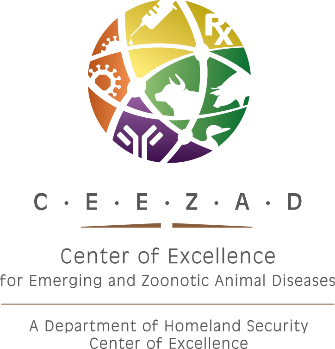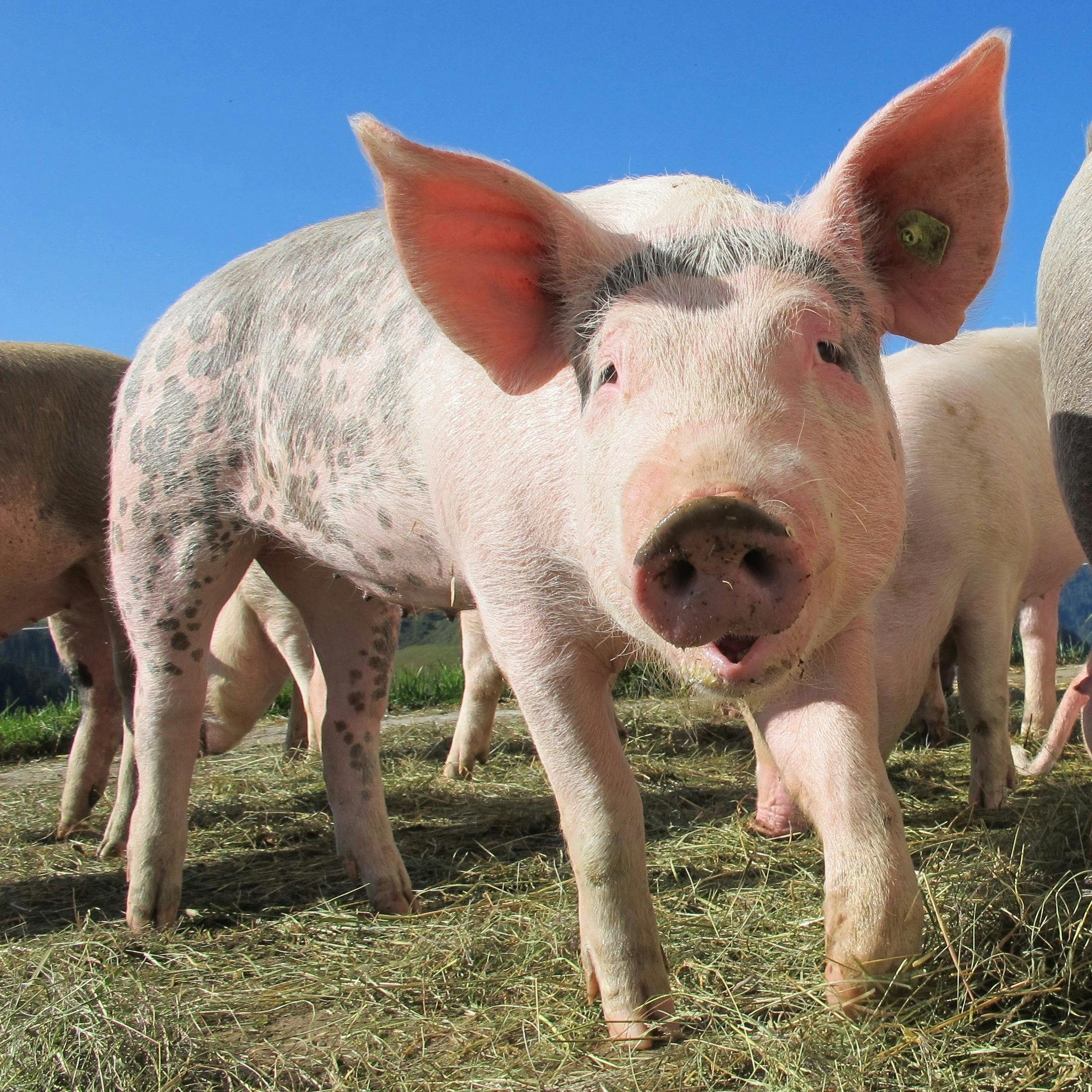News Archive
Thursday, March 25, 2025
A year later, cow flu origins are an unsettling puzzle
When U.S. Department of Agriculture (USDA) officials reported one year ago today that the H5N1 avian influenza virus had infected dairy cattle in Texas and Kansas, it seemed a freak event—a rare confluence of factors that somehow allowed a bird virus to infect cows.
Saturday, February 8, 2025
New bird flu variant found in Nevada dairy cows has experts sounding alarms: ‘We have never been closer to a pandemic from this virus’
The disclosure that dairy herds in Nevada have been infected by a version of the H5N1 bird flu not previously seen in cows has put virologists and researchers on high alert. Among other things, the news from the Nevada Department of Agriculture suggests that driving the virus out of the U.S. cattle population won’t be nearly as simple as federal officials once suggested—or perhaps hoped.
Thursday, February 6, 2025
New bird flu variant in cattle adds to concerns about federal response under Trump
A variant of H5N1 bird flu that has circulated widely in wild birds — and in several instances led to severe illness in humans — has turned up in dairy cattle for the first time.
Wednesday, December 4, 2024
Here's why bird flu fears are intensifying
Scientists believe it was roughly a year ago that an influenza virus sickening and killing birds happened upon a new and surprisingly hospitable host in the Texas Panhandle — dairy cattle.
Wednesday, October 23, 2024
CEEZAD Director elected to National Academy of Medicine
The Director of the Center of Excellence for Emerging and Zoonotic Animal Diseases (CEEZAD, www.ceezad.org) and the Center on Emerging and Zoonotic Infectious Diseases (CEZID; https://www.k-state.edu/cezid/) has been elected to the National Academy of Medicine (NAM), the premier organization of scientists working in health-related fields. He is the first faculty member to be elected to the NAM while at Kansas State University.
(CEEZAD, www.ceezad.org) and the Center on Emerging and Zoonotic Infectious Diseases (CEZID; https://www.k-state.edu/cezid/) has been elected to the National Academy of Medicine (NAM), the premier organization of scientists working in health-related fields. He is the first faculty member to be elected to the NAM while at Kansas State University.
Wednesday, October 2, 2024
Kansas State University research finds bovine H5N1 influenza may spread via milking
A Kansas State University researcher has published findings linking milking practices to the transmission of bovine H5N1 influenza virus, which affects dairy cattle and was first detected in the U.S. in spring 2024.
Thursday, September 26, 2024
H5N1 Influenza May Be Spreading Through Cows via Milking Rather Than Air, Experts Weigh In
The new findings trigger the ongoing debate about raw milk consumption and its potential risks.
Thursday, August 22, 2024
CEEZAD celebrates 20th anniversary of DHS Center of Excellence program
 The Kansas State University-based Center of Excellence for Emerging and Zoonotic Animal Diseases (CEEZAD) joins the Department of Homeland Security (DHS) in celebrating the 20th anniversary of the creation of the Centers of Excellence program.
The Kansas State University-based Center of Excellence for Emerging and Zoonotic Animal Diseases (CEEZAD) joins the Department of Homeland Security (DHS) in celebrating the 20th anniversary of the creation of the Centers of Excellence program.
Thursday, August 22, 2024
CEEZAD researchers examine H5N1 HPAIV in environmental samples from a dairy farm
 An article co-authored by the Director of the Center of Excellence for Emerging and Zoonotic Animal Diseases (CEEZAD, www.ceezad.org) and the Center on Emerging and Zoonotic Infectious Diseases (CEZID; https://www.k-state.edu/cezid/) advances the understanding of how the HPAIV H5N1 virus spreads among terrestrial mammals including dairy cattle.
An article co-authored by the Director of the Center of Excellence for Emerging and Zoonotic Animal Diseases (CEEZAD, www.ceezad.org) and the Center on Emerging and Zoonotic Infectious Diseases (CEZID; https://www.k-state.edu/cezid/) advances the understanding of how the HPAIV H5N1 virus spreads among terrestrial mammals including dairy cattle.
Thursday, August 22, 2024
CEEZAD researchers explore potential for gene editing of pigs to control influenza A virus
 An article co-authored by the Director of the Center of Excellence for Emerging and Zoonotic Animal Diseases (CEEZAD, www.ceezad.org) and the Center on Emerging and Zoonotic Infectious Diseases (CEZID; https://www.k-state.edu/cezid/) explores the potential for commercial use of gene edited pigs to minimize economic losses caused by Influenza A virus.
An article co-authored by the Director of the Center of Excellence for Emerging and Zoonotic Animal Diseases (CEEZAD, www.ceezad.org) and the Center on Emerging and Zoonotic Infectious Diseases (CEZID; https://www.k-state.edu/cezid/) explores the potential for commercial use of gene edited pigs to minimize economic losses caused by Influenza A virus.
Monday, July 15, 2024
Brain invasion of bovine coronavirus: molecular analysis of bovine coronavirus infection in calves with severe pneumonia and neurological signs

An article co-authored by the Director of the Center of Excellence for Emerging and Zoonotic Animal Diseases (CEEZAD, www.ceezad.org) and the Center on Emerging and Zoonotic Infectious Diseases (CEZID; https://www.k-state.edu/cezid/) studies the ability of the bovine coronavirus to impact the brain.
Monday, July 15, 2024
CEEZAD scientists advance understanding of Rift Valley Fever phlebovirus reassortment in sheep
An article co-authored by the Director of the Center of Excellence for Emerging and Zoonotic Animal Diseases (CEEZAD, www.ceezad.org) and the Center on Emerging and Zoonotic Infectious Diseases (CEZID; https://www.k-state.edu/cezid/) describes the reassortment ability of the Rift Valley Fever virus in sheep.
Emerging and Zoonotic Animal Diseases (CEEZAD, www.ceezad.org) and the Center on Emerging and Zoonotic Infectious Diseases (CEZID; https://www.k-state.edu/cezid/) describes the reassortment ability of the Rift Valley Fever virus in sheep.
Monday, Juy 1, 2024
Ten students gain knowledge from CEEZAD’s 2024 BSL-3 Summer Training Program

A CEEZAD recent summer workshop has given 10 future veterinary researchers a chance to explore the full range of professional opportunities that will be available to them when they complete their studies. It also acquainted those candidates with recent developments in the field of veterinary infectious disease studies in high level biocontainment.
Saturday, June 29, 2024
How Does Bird Flu Spread in Cows? Experiment Yields Some ‘Good News.’
Ever since scientists discovered influenza infecting American cows earlier this year, they have been puzzling over how it spreads from one animal to another. An experiment carried out in Kansas and Germany has shed some light on the mystery.
Thursday, June 27, 2024
1 big thing: A biodefense project rises on the plains
Two hours west of Kansas City, a multibillion-dollar research hub is emerging on the prairie as a new first line of defense against animal diseases that can decimate livestock, rattle financial markets and potentially spill over into humans.
Wednesday, March 13, 2024
K-State President Linton Interviews Dr. Juergen Richt
Dr. Juergen A. Richt, Regents and University Distinguished Professor at Kansas State University and Director of the Center of Excellence for Emerging and Zoonotic Animal Diseases (CEEZAD, www.ceezad.org) and the Center on Emerging and Zoonotic Infectious Diseases (CEZID; https://www.k-state.edu/cezid/), was interviewed recently by K-State President Richard Linton about the important work being done in his lab.
You can see and hear the full interview by watching the video below.
Next-Gen 'Cats: Click the image to learn more about K-State research improving the lives of Kansans.
December 19, 2023
Board of Regents extends Dr. Richt’s designation as Regents Distinguished Professor on December 19, 2023
The Kansas Board of Regents has unanimously approved a request by Kansas State University (KSU) to extend recognition of Dr. Juergen A. Richt as the Regents Distinguished Professor at KSU. Such extensions are confirmed every five years. The action took place at a recent meeting of the Kansas Board of Regents. This was reported recently by the Manhattan Mercury on Page A1 | e-Edition | themercury.com.
Dr. Richt is Director of the Center of Excellence for Emerging and Zoonotic Animal Diseases (CEEZAD; www.ceezad.org) and the Center on Emerging and Zoonotic Infectious Diseases (CEZID; https://www.k-state.edu/cezid/), both located at KSU. He is regarded as a pioneer in the field of veterinary science.
In confirming the decision, The Manhattan Mercury cited the Board of Regents Vice Chair Mr. Carl Ice quoting a committee member as saying, “he seems like the very type of professor we would want to get this distinction.”
Dr. Richt expressed gratitude for the confidence expressed by the Kansas Board of Regents in unanimously determining to continue his designation as the Regents Distinguished Professor at KSU: “I am humbled by the Kansas Board of Regents support for my work. I will wholeheartedly continue to pursue advances in the field of veterinary research with unwavering vigor,” he said.
April 1, 2022
Yale bacteriologist is featured in CEZID presentation on April 1, 2022
A world-renowned bacteriologist discussed his laboratory’s research on different types of Salmonella as the April speaker on the Center on Emerging and Zoonotic Infectious Diseases (CEZID; www.k-state.edu) Distinguished Speaker series. This was the first in-person seminar of this Speaker Series, and was also available online.
The speaker was Dr. Jorge Galán , a professor of Microbial Pathogenesis and Cell Biology and Chair of the Department of Microbial Pathogenesis at the Yale University School of Medicine. On the Yale faculty since 1998, he is a member of the National Academy of Sciences and the National Academy of Medicine. The title of his presentation was “Pathogen Restriction and Host Specificity: Insights From the Human Pathogen Salmonella Typhi”.
Dr. Galan discussed his laboratory’s work on Salmonella typhi, the cause of typhoid fever in humans. In particular, Dr. Galán's presentation focused on the mechanisms behind the strict host specificity exhibited by Salmonella Typhi, which can only infect humans. There are many different types of Salmonella, some of which can infect many different hosts, and therefore can gain access to the food chain and eventually infect humans. Others, like Salmonella typhi, are specifically adapted to a single host.
Dr. Galán’s presentation elaborated on the multiple mechanisms that have led to Salmonella Typhi to become adapted to the human host.
Dr. Meng speaks on Hepatitis E virus research as part of CEZID Distinguished Speaker Series
Dr. X. J. Meng, University Distinguished Professor and Director of the Virginia Tech Center for Emerging, Zoonotic and Arthropod-borne Pathogens (CeZAP), delivered a presentation on Oct. 22 concerning his work on Hepatitis E virus as part of the Distinguished Speaker series of the Center on Emerging and Zoonotic Infectious Diseases (www.cezid.org) at Kansas State University.
Dr. Meng is an elected member of the National Academy of Sciences, an elected fellow of the American Academy of Microbiology, and an elected fellow of the National Academy of Inventors. He received his medical degree from Binzhou Medical University in China, a master's degree from Wuhan University and a doctorate from Iowa State University. From 1995 to 1999, Meng was a John Fogarty visiting scientist and later a senior staff fellow at NIAID, NIH, Bethesda, Maryland.
Hepatitis E virus is a single-stranded, positive-sense, small RNA virus infecting both humans and more than a dozen other animals. In his presentation, Dr. Meng said Hepatitis E virus causes about 20 million human infections annually, with 44,000 deaths worldwide.
It can also be found in numerous animal species, among them pigs, camels, deer, rabbits, rats, chickens, moose and ferrets.
Dr. Meng discussed his experiments on cross-species infection of non-human primates with swine HEV. He also discussed cross-species infections of pigs with human HEV.
Much of his presentation focused on modes of infection of humans, notably foodborne hepatitis E virus infection by consumption of contaminated animal meat products or zoonotic infection via contact with infected animals.
He also discussed his lab’s research findings regarding genetic, and environmental reasons behind cross-species hepatitis E virus infection.
CEZID effort includes two new research core facilities
Researchers from the Center on Emerging and Zoonotic Infectious Diseases, CEZID, (www.cezid.org) have established two new core facilities designed to enhance research into zoonotic infectious diseases.
CEZID, a National Institutes of Health (NIH)-sponsored organization committed to biomedical research excellence, is directed by Dr. Juergen A. Richt, the Regents Distinguished Professor at Kansas State University and an internationally recognized virologist. Dr. Phil Hardwidge, an internationally recognized bacteriologist, of Kansas State University’s College of Veterinary Medicine, is the associate director.
The two newly established core facilities are an animal model/pathology (AMP) core and a molecular and cellular biology (MCB) core.
The AMP core provides personalized, project-specific support and expertise to facilitate the use of animal models and pathology services. Existing infrastructure includes a new laser capture micro-dissection instrument. The AMP core will also produce hybridomas and hyper-immune sera for the development of diagnostic tests essential to Centers of Biomedical Research Excellence (COBRE) research.
The MCB Core will provide imaging and flow cytometry services to COBRE users. MCB Core services include DNA sequencing, CRISPR technology, and cell-sorting capabilities. MCB Core support for bioinformatics and handling of large DNA sequencing datasets is also provided.
The MCB Core offers new equipment including a NextSeq, BD FACSMelody Cell Sorter Live Cell Imager equipment, and several machines for single-cell gene expression analysis.
NIH-backed CEZID researchers probing zoonotic infectious diseases
Since its inception in 2020, researchers from the Center on Emerging and Zoonotic Infectious Diseases (www.cezid.org) have advanced several areas of research into zoonotic infectious diseases.
CEZID, a National Institutes of Health (NIH)-sponsored organization committed to biomedical research excellence, is directed by Dr. Juergen A. Richt, the Regents Distinguished Professor at Kansas State University and an internationally recognized virologist. Dr. Phil Hardwidge, an internationally recognized bacteriologist, of Kansas State University’s College of Veterinary Medicine, is the associate director.
Here’s a brief synopsis of the four NIH-backed research projects currently underway through CEZID.
- Mechanisms of effector-mediated host defense using Legionella, Dr. Stephanie Shames, College of Arts and Science, Kansas State University
Emerging and zoonotic infectious diseases cause global health devastation and are increasing in prevalence due to human activity and other factors that facilitate disease spread. Often, the etiological agents of EZIDs are difficult to study due to lack of established tools and genetic systems to perform hypothesis-driven research. The objective of this work is to use bacteria of the genus Legionella as model pathogens to characterize host defense mechanisms applicable to EZIDs. Legionella species are natural pathogens of protozoa and accidental human pathogens that can cause disease upon inhalation of contaminated aerosols and subsequent bacterial replication within alveolar macrophages. The overall objective is to elucidate mechanisms by which effector function contributes to pathogen clearance by the innate immune system and determine whether these can be used to enhance defense against other pathogens.
- Cutaneous human papillomavirus as a novel model of viral oncogenesis, Dr. Nicholas Wallace, College of Arts and Sciences, Kansas State University
Emerging infectious diseases account for at least 12% of all human pathogens. Increased globalization led the World Health Organization to predict that novel infectious agents will continue to appear at an unprecedented rate. To protect society against these pathogens, it is essential to know all of the potential mechanisms by which infectious agents can cause disease. While viral infections are known to cause 15-20% of cancers, persistent genus β human papillomavirus (β-HPV) infections cause non-melanoma skin cancers. β- HPV’s role in these malignancies is through a novel mechanism that could be shared with emerging pathogens. This work defines the extent that loss of the p300 protein prevents cells from mitigating genome destabilizing events, particularly events occurring during the S-phase. The overall goal of this work is to understand the mutagenic potential of p300 destabilization to improve risk assessment of emerging viruses.
- Rational design of live-attenuated vaccines for flaviviruses, Dr. Yan-Jang (Scott) Huang, College of Veterinary Medicine, Kansas State University
The objective of the work is to develop broadly effective attenuation strategies for the rational design of live-attenuated vaccines (LAVs) against flaviviruses. Pathogenic flaviviruses cause severe human diseases such as hemorrhagic fever and encephalitis. The use of two legacy vaccines, yellow fever virus (YFV) 17D and Japanese encephalitis virus (JEV) SA14-14-2, has demonstrated how immunization can be an efficient strategy for disease control. However, the empirical approach used for the development of these LAVs has proven ineffective in producing candidate LAVs for other flaviviruses, thereby demanding new strategies for rational vaccine design. The central hypothesis is that conserved residues in the interdomain peptides are functionally important for flavivirus virulence, regardless of their tissue tropism and disease pathogenesis. Broadly effective attenuation strategies will be developed by engineering selected mutations into the full-length complementary DNA infectious clones of two model flaviviruses, West Nile virus and YFV; then demonstrate the loss of virulence in respective mouse models. The completion of the studies will lead to an advancement in knowledge regarding the functional importance of the EDI-EDII hinge and EDI-EDIII linker interdomain regions for flavivirus virulence.
- Host and aquatic environment dependent cost and benefits of Shigella flexneri virulence plasmid and Shiga toxin production. Dr. Thomas Platt, College of Arts and Sciences, Kansas State University
Many emerging infectious diseases maintain significant populations outside of host environments. The consequences of dynamics occurring in these environmental reservoirs on the pathogenesis of these pathogens is seldom investigated and poorly characterized. This project examines how the molecular systems that facultative pathogens use to exploit hosts are shaped by the consequences of dynamics occurring within both host and environmental reservoir environments. The proposed work will determine the context-dependent fitness consequences of Shigella virulence factors and determine whether selection in environmental reservoirs may contribute to the recent emergence of novel Shiga toxin producing Shigella pathogens.
Beyond the four research programs, CEZID is also overseeing five pilot projects, all conducted by Kansas State University faculty. Those five are:
- Identifying novel antiviral targets to inhibit flaviviral replications using CRISPR, Dr. Dana Vanlandingham
- Molecular mechanisms of tick-borne pathogen infection in the tick vector. Dr. Kathryn Reif
- Establishing a rationally designed universal rotavirus reverse genetics platform, Dr. Rachel Palinski
- Characterization of the impact of Salmonella SseK1 on bacterial gene regulation, Dr. Samir El Qaidi
- Nanoparticle based antiviral against SARS-CoV-2, Robert DeLong
CEZID holds its Annual Meeting
Officials of the Kansas State University-based Center on Emerging and Zoonotic Infectious Diseases (www.cezid.org) held the organization’s Annual Meeting Oct. 20-21 on the KSU campus.
The Center, a National Institutes of Health Center of Biomedical Research Excellence (COBRE), was established in 2020 with a focus on research projects bridging areas of excellence within the infectious disease programs of the Colleges of Veterinary Medicine and Arts and Sciences at Kansas State University.
Dr. Juergen A. Richt, Regents Distinguished Professor of Veterinary Medicine at KSU, is director of CEZID. Dr. Phil Hardwidge, a professor in the College of Veterinary Medicine at KSU, is assistant director.
The meeting was held at the lecture hall of the Grain Science complex on the KSU campus.
Focal points of the two-day annual meeting included evaluation of projects by members of advisory committees. They reviewed the status of research by nine project leaders whose work is being conducted under CEZID auspices. Those were:
*Dr. Nicholas Wallace, College of Arts and Sciences: Cutaneous human papillomavirus as a novel model of viral oncogenesis.
*Dr. Yan-Jang Huang, College of Veterinary Medicine: Rational design of live-attenuated vaccines for flaviviruses.
*Dr. Thomas Platt, College of Arts and Sciences: Host and aquatic environment dependent cost and benefits of Shigella flexneri virulence plasmid and Shiga toxin production.
*Dr. Stephanie Shames, College of Arts and Sciences: Mechanisms of effector-mediated host defense using Legionella.
*Dr. Rachel Palinski, College of Veterinary Medicine: Establishing a rationally designed universal rotavirus reverse genetics platform.
*Dr. Kathryn Reif, College of Veterinary Medicine: Molecular mechanisms of tick-borne pathogen infection in the tick vector.
*Dr. Dana Vanlandingham, College of Veterinary Medicine: Identifying novel antiviral targets to inhibit flaviviral replication using CRISPR.
Dr. Robert Delong, College of Veterinary Medicine: Nanoparticle based antiviral against SARS-CoV-2.
Dr. Samir El Qaidi, College of Veterinary Medicine: Characterization of the impact of Salmonella SseK1 on bacterial gene regulation.
The annual meeting also included presentations on the Molecular and Cellular Biology Core by core director Hardwidge, and on the Animal Model/Pathology Core by core director Dr. Igor Morozov. External and internal mentors took part, as did members of external and internal advisory committees.
